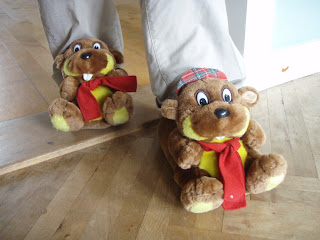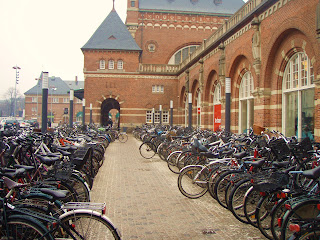Tranehoej
Visiting Tranehoej has most certainly been a high light of the trip so far. We found an amazing community of people living together. They were incredibly generous people, both with their resources as well as their time and humor. We were treated to everything from fresh squeezed apple juice to lamb from their own farm to bicycles to explore the area to hours of conversation about Tranhoej and the Danish culture. This was an experience I will treasure for a long time. The following is but a glimpse of that experience…

When I first began to research intentional communities/eco-villages in Denmark there were a couple that seemed to be the more well known, Svanholm (http://www.svanholm.dk) and Munksoegaard (http://www.munksoegaard.dk/index_en.html) - (Svanholm was mentioned a few times by folks at Torri Superiore and was of particular interest to me because of the economic and governing system they have adopted) While neither of these communities have a guest house as a primary project of their community we were hoping to be able to visit the communities and learn more about some of their projects. As it was, for various reasons, we weren’t able to visit either one. But in the midst of researching these and other communities I came across a small community about 80 km outside of Copenhagen called Tranehoej (http://www.tranehoej.dk/en_summery.html)On the English page of their website, after describing their organic vegetable garden, the sheep, the goats and the chickens, it also mentions that as a member of Servas they welcome visitors…
So I sent off an email the beginning of February and a few days later received an email from Gitte Jakobsen telling us that they would be glad to host us for a night and to call us when we arrived in Copenhagen so she could give us directions to their place.
Fast forward 6 six weeks to the middle of March. We call Gitte from Copenhagen and she helps us figure out how to get to Tranehoej by public transportation - the next day we take the train to Jyderup and then catch a local bus to Searslav - where Gitte is outside waiting for us with her dog Emma. After introductions and a short walk we arrive at Tranehoej, a U-shaped compound with a courtyard of sorts in the center of the three buildings.

Gitte welcomes us inside, invites us to take off our shoes, and since I don’t have any socks - I get the warmest snuggliest slippers possible…

A former resident, Daniel, who just recently moved back to Copenhagen, happened to be there at the time and he offered to show us around the property. As we walk outside to the garden and sheep pasture we can see and hear the windmills not too far in the distance - the chickens were happily wandering around their spacious coup - we didn’t get to see the goats, but the sheep were grazing on the fields. Next to the chicken coup is the apple orchard - with nearly 175 trees - not all of which they currently harvest.
After a rest in our room, we were welcomed to dinner with the wonderful aroma of bread and chili and rice and vegetables. At dinner we meet the rest of the community - there are three families currently living at Tranehoej - they have the capacity for six families however and were excited to be welcoming a new family in just a week or two. One of their struggles seems to be the distance from Copenhagen. Families find it harder than expected to live this far from the city and there are not a lot of ways to make a living in the countryside.
But among the three families who have found a way to make it work there is a wonderful sense of community - it is quickly evident to me that this is a group of people who know each other well. They seem comfortable with one another, there was an ease around the table that felt like you had just sat down with old friends. This was a family not of blood but of intention. They didn’t just share space, this wasn’t co-housing. This was a community invested in one another and in their common life together. It was inspiring to be at their table.
Two hours later we are still sitting around the table talking, having already delved into the topics of health care, design, politics of Denmark and Salt Lake City, and immigration…in between dinner and dessert we learn that Helen, one of the residents here, works for the Church of Denmark teaching 3rd graders. I felt a connection as she talked about the current patterns of religious life in Denmark and the struggles and joys of working for the church…Then during dessert - which was crème brulee (made from the eggs of the chickens 200 feet away) and chocolate muffins and ice cream we learned about the folke high schools in Denmark - a unique kind of education that focuses not so much on learning information, or specializing in a particular skill, although that is part of it, but more on cultivating the whole person, as Helen called it - a school for life - learning to live - to be alive - to be awakened to life…They all spoke highly of this experience and felt that folke high schools have contributed to the creativity and vibrancy that is so often recognized in Danish culture.
After a fabulous night sleep we enjoyed breakfast with Tom and Gitte, fresh apple juice from there own apples, homemade smorrebrod, (a traditional Danish bread), a selection of cheeses, and coffee.
Since our ferry to Samso didn’t leave to six, we had the whole day ahead of us and Tom and Gitte offered us the use of their bikes.

After four hours exploring the coast and the town of Havnso, we sat down to a late lunch of freshly roasted lamb (yes from their own flock), fresh bread, and more apple juice. After a short nap Gitte asked if we wanted some tea or coffee and some homemade apple cake (again from their own apples). And yes…it was delicious. The hospitality continued with the ride to the train station.
The 24 hours at Tranehoej will remain with me for a long time.



















